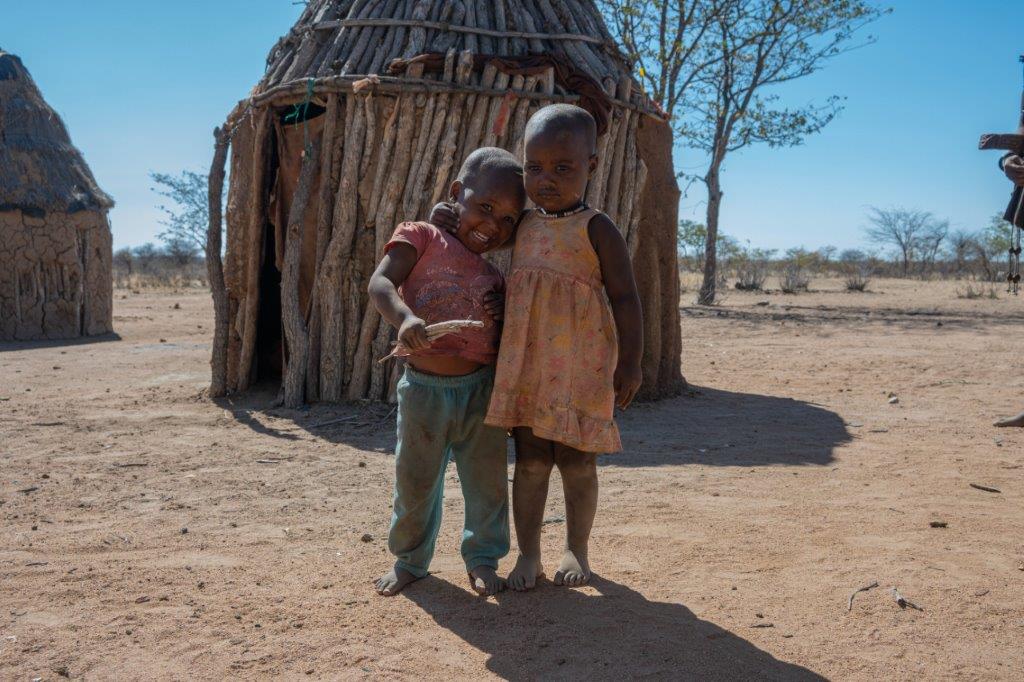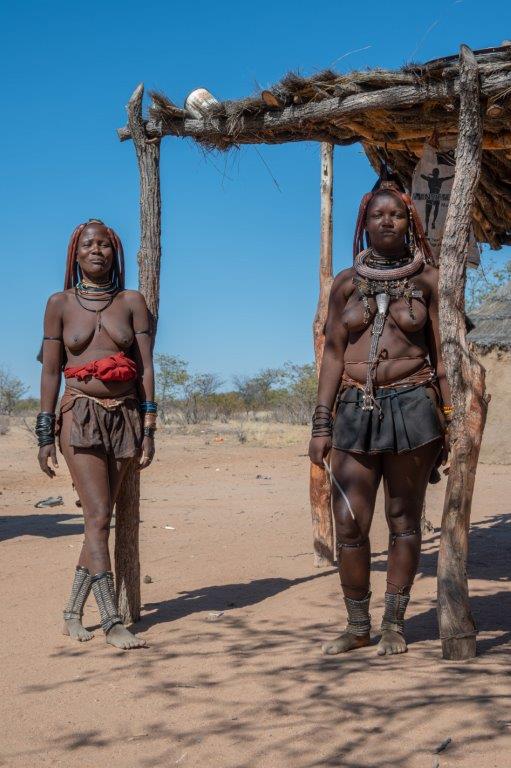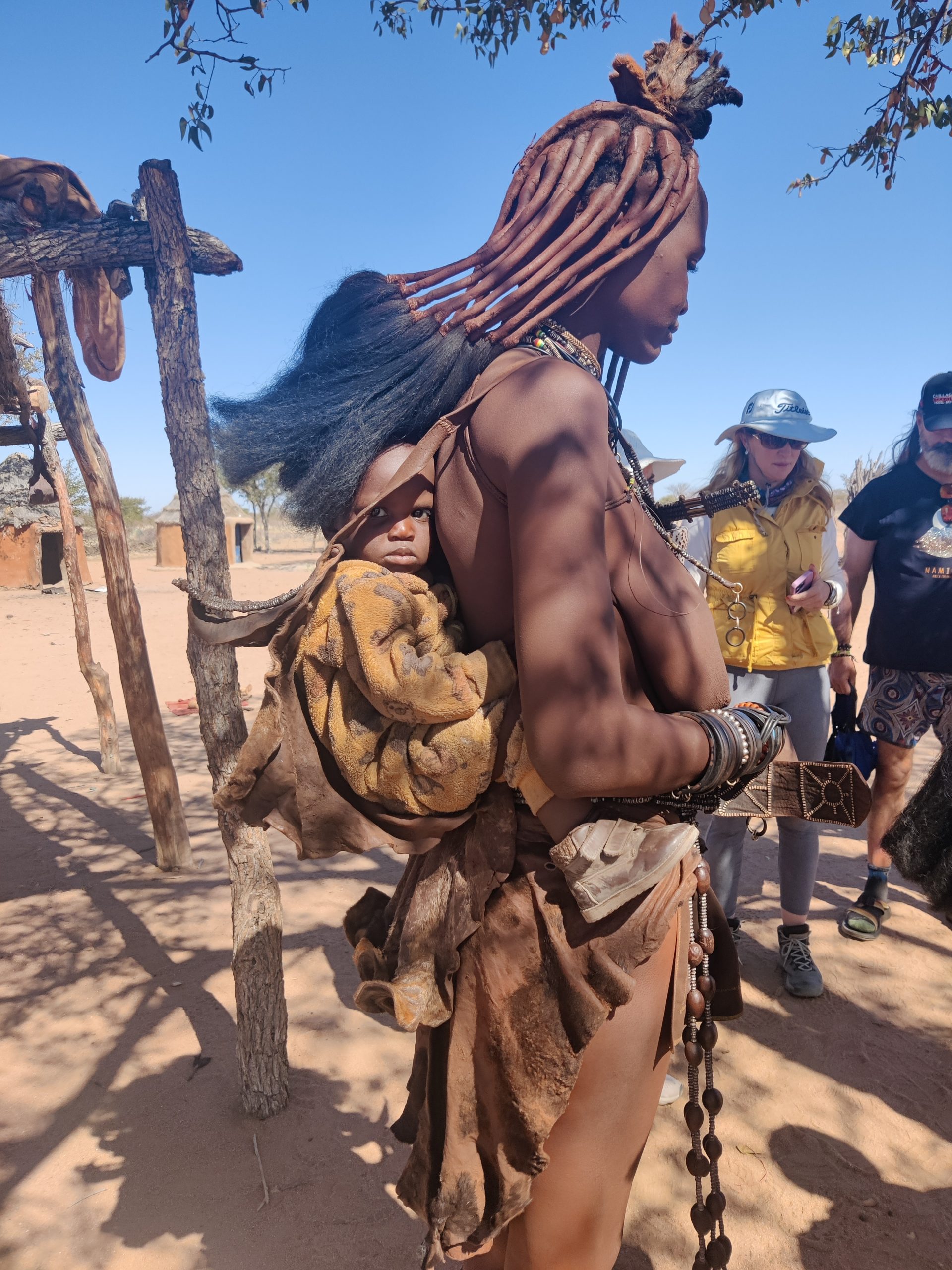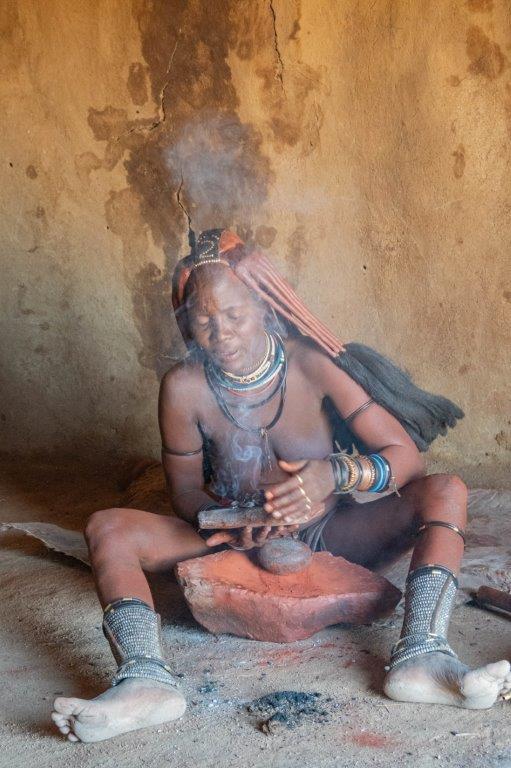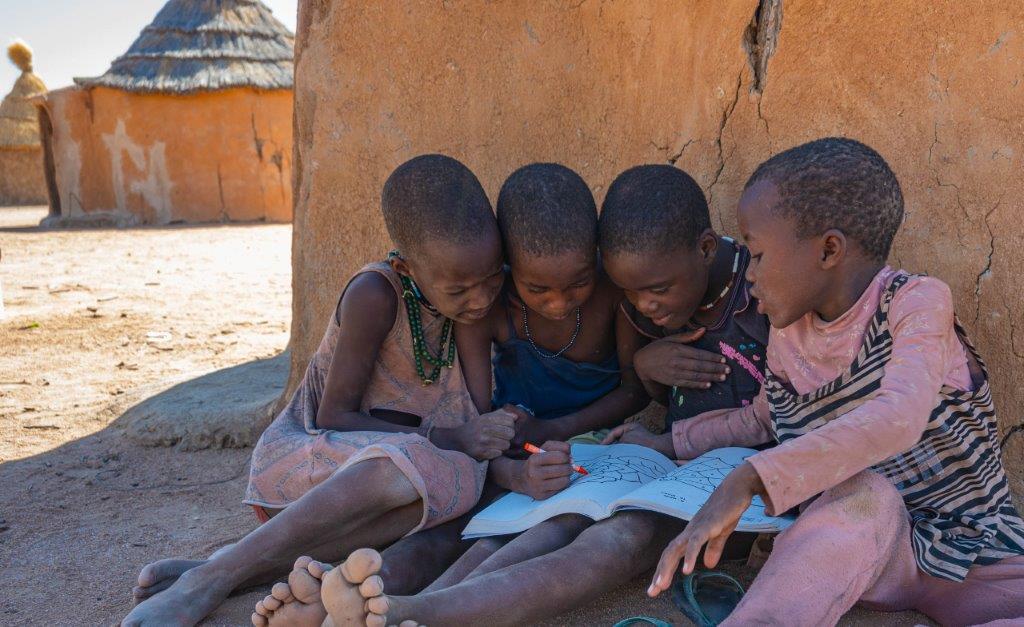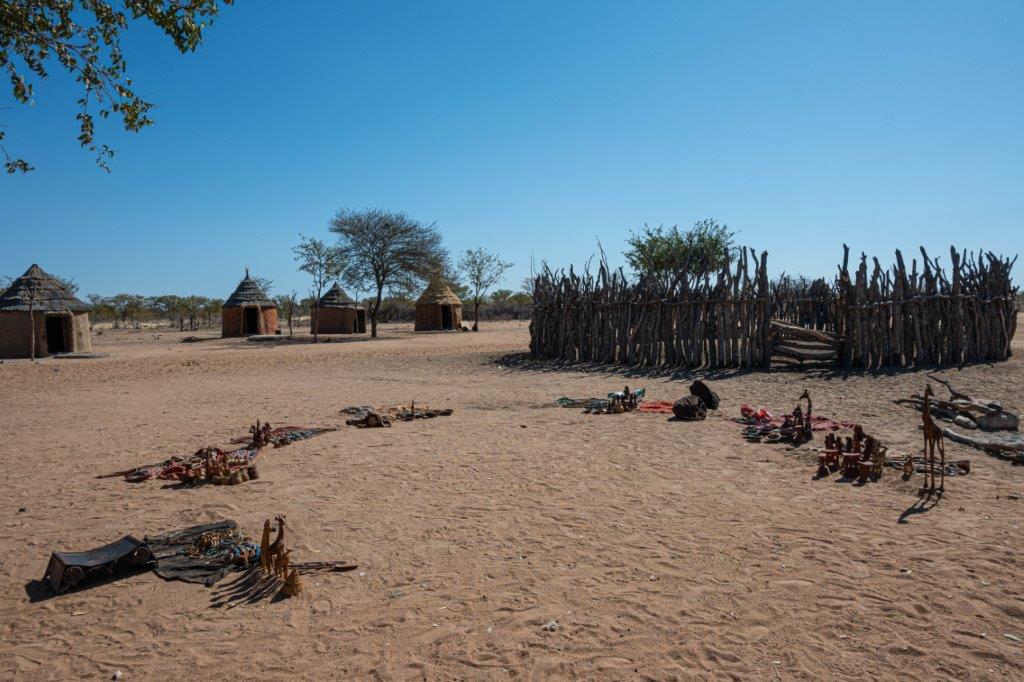One of the highlights of the trip, in fact, the most culture-shocking one, was visiting a Himba village.. Himbas are one of the 11 Namibian tribes. Kennedy comes from the Damara tribe for which I talk about a bit more in the next part, Eastus is from the Oshiwambo (also called Ovambo) tribe – the biggest tribe in the country who live in the north of the country and into Angola where they survive by cattle farming and where the conditions for this are better since cows require a lot of water and water is scarce in the country but the situation is a bit better in the North of the country. Ovambo marry only one woman as well as Damara but back in the day Ovambo did marry more than one woman, Erastus’s grandfather had 8 wives. :O
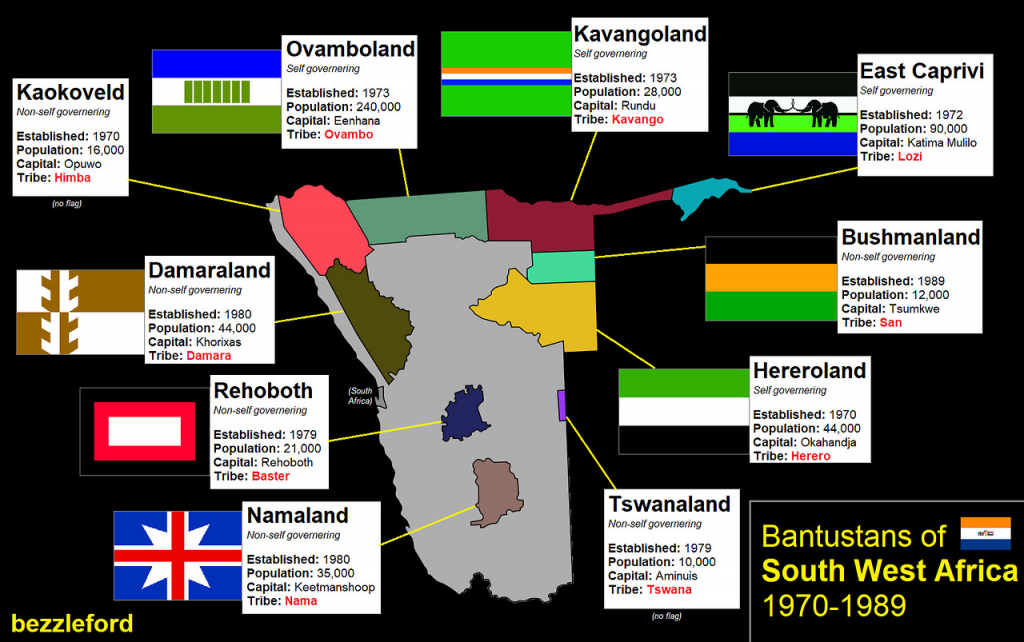
So before we went to the Himba village, Kennedy warned us to not buy any sweets as they cannot afford to fix issues with the teeth of the children and their people in general, so he told us to get basic products that they use daily like a bag of rice, beans etc. Also for the kids he said it’s ok to get some colouring books and pastels and that’s what myself and Fill got – a few books and pastels while the other guys got them food and some gave them money. When we visited, they danced for us, they explained that each family has kids and they ‘sacrificed’ one of their kids to go and study in the city, mostly tourism while the rest stay behind in the village to continue their traditional life. For that, they remove the bottom 4 teeth of every kid in order to improve the pronunciation of their language.
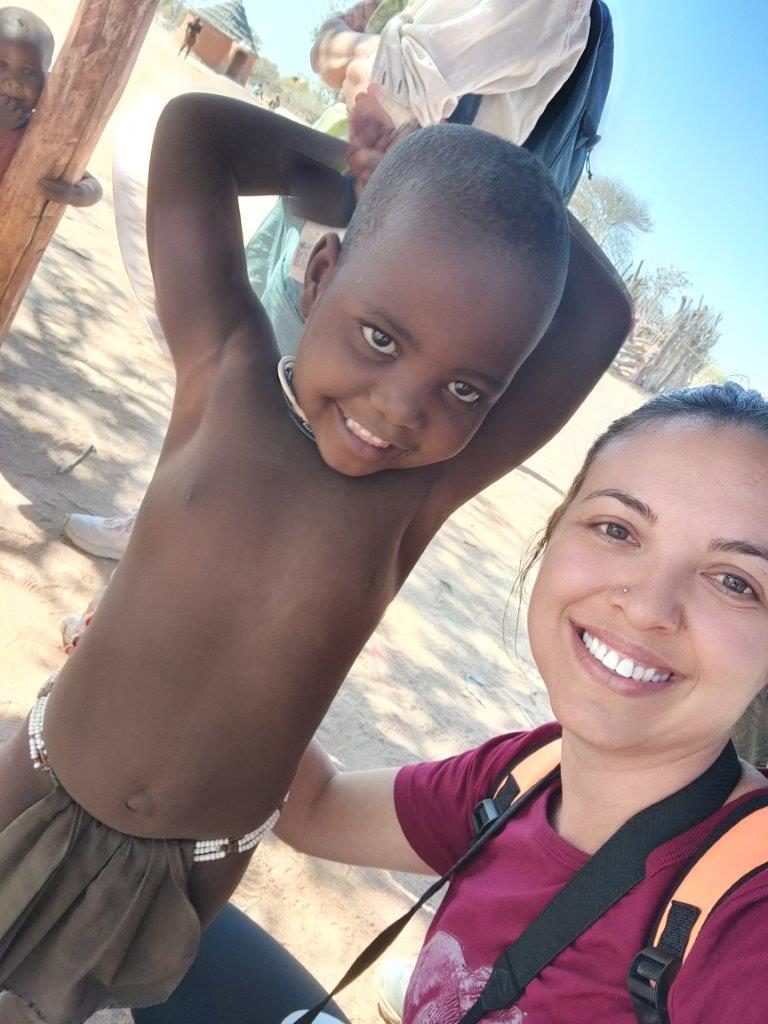
They taught us how to say “Hello”, “How are you” and “I’m good” in their language and we did that with everyone in the tribe – was so fun! “Moro” – “Meriwi”, “Nawa” and we repeated these 3 words with everyone hahaha 😀 Loved it. They cover their hair and bodies with red-coloured clay and oil mixture to protect them from the sun. They also burn a special incense weed that they use as a “shower”, to kill the bacteria and smell nice. Their village is in a circle, where the outer size is twigs and sticks to outline the borders of the village, then inside in the middle is the cattle area, again surrounded by twigs and branches. There is a main hut where people have rituals and other gatherings and there are small huts where usually a woman lives with her children. If a man marries more than one woman which is a practice with Himva, he must ensure he gives them all equal love and also each will have her own hut. A woman is not fully considered a woman, until she gives birth to her first child, while boys have an initiation ritual of circumcision in order to become men and a goat or sheep is slaughtered to mark the occasion. Unmarried women wear a special necklace to indicate that she is single and available. When a woman has to deliver a baby, she must go outside of the borders of the village, otherwise, it’s considered as if she’s giving birth like the goats, which is considered shameful.
